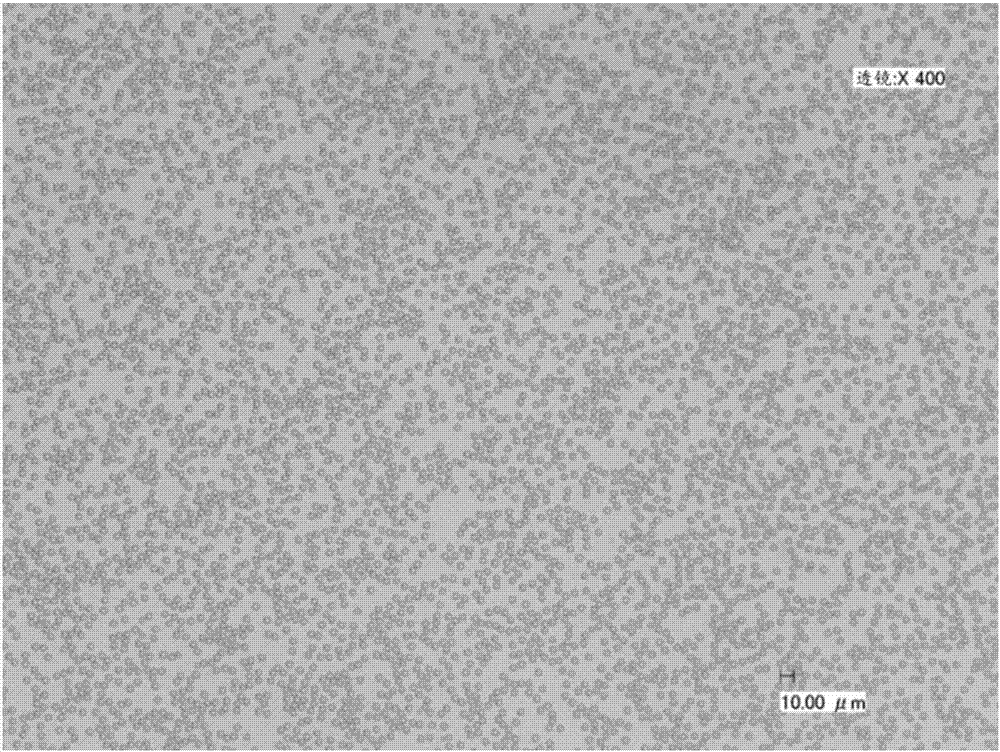Polymer particle and method for producing the same
A manufacturing method and polymer technology, which can be used in instruments, optics, optical components, etc., can solve the problems of no hydrophilic part, inability to fully aggregate, difficult to achieve high haze of anti-glare film, etc., to avoid hydrophobicity. Too high, excellent optical properties, the effect of promoting dissolution
- Summary
- Abstract
- Description
- Claims
- Application Information
AI Technical Summary
Problems solved by technology
Method used
Image
Examples
Embodiment
[0099] Hereinafter, the present invention will be described by way of examples and comparative examples, but the present invention is not limited thereto. First, methods for measuring the composition and characteristics of polymer particles in the following Examples and Comparative Examples will be described.
[0100] [Measuring method of volume average particle diameter and coefficient of variation of particle diameter of polymer particles]
[0101] The volume average particle diameter of the polymer particles was measured with a Coulter Counter III (a measuring device manufactured by Beckman Coulter, Inc.). The measurement was carried out using the pore diameter calibrated in the user's manual of Multisizer™ 3 issued by Beckman Coulter, Inc.
[0102] In addition, the pore diameter used for the measurement is appropriately selected according to the size of the particle to be measured. When selecting an aperture having a size of 50 μm, the current (aperture current) was set ...
manufacture example 1
[0206] First, in a reaction vessel equipped with a stirrer, a thermometer, and a reflux condenser, 3240 g of ion-exchanged water as an aqueous medium was added, and then 5.6 g of n-octyl mercaptan as a molecular weight modifier was dissolved in a non-crosslinking ( A solution in 560 g of methyl methacrylate (hereinafter, abbreviated as "MMA") of a meth)acrylic monomer. Then, while stirring the contents of the reaction vessel in a nitrogen stream, the temperature was raised to 70° C., and an aqueous potassium persulfate solution obtained by dissolving 2.8 g of potassium persulfate as a polymerization initiator in 100 g of ion-exchanged water as an aqueous medium was charged. , and stirred at 70° C. for 12 hours to carry out a polymerization reaction. Thus, a dispersion liquid of polymethyl methacrylate (PMMA) particles (hereinafter referred to as "seed particle dispersion liquid 1") as seed particles was obtained.
[0207] The seed particle dispersion 1 contained 14.3% by weig...
manufacture example 2
[0209] First, in a reaction vessel equipped with a stirrer, a thermometer, and a reflux condenser, 3320 g of ion-exchanged water as an aqueous medium was added, and then 3.6 g of n-octyl mercaptan as a molecular weight modifier was dissolved in a non-crosslinking ( 250 g of the seed particle dispersion 1 obtained in the production example 1 of the seed particle was further added to the solution formed in MMA360g of the meth)acrylic monomer. Then, while stirring the contents of the reaction vessel in a nitrogen stream, the temperature was raised to 70° C. in a nitrogen stream, and 1.8 g of potassium persulfate as a polymerization initiator was dissolved in 100 g of ion-exchanged water as an aqueous medium. The potassium persulfate aqueous solution was stirred at 70° C. for 3 hours to perform a polymerization reaction, and then stirred at 100° C. for 3 hours to perform a polymerization reaction. Thus, a dispersion liquid of polymethyl methacrylate (PMMA) particles (hereinafter r...
PUM
| Property | Measurement | Unit |
|---|---|---|
| particle size | aaaaa | aaaaa |
| Curie point | aaaaa | aaaaa |
| refractive index | aaaaa | aaaaa |
Abstract
Description
Claims
Application Information
 Login to View More
Login to View More - R&D
- Intellectual Property
- Life Sciences
- Materials
- Tech Scout
- Unparalleled Data Quality
- Higher Quality Content
- 60% Fewer Hallucinations
Browse by: Latest US Patents, China's latest patents, Technical Efficacy Thesaurus, Application Domain, Technology Topic, Popular Technical Reports.
© 2025 PatSnap. All rights reserved.Legal|Privacy policy|Modern Slavery Act Transparency Statement|Sitemap|About US| Contact US: help@patsnap.com



